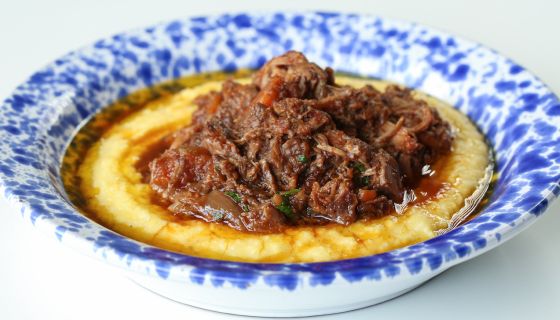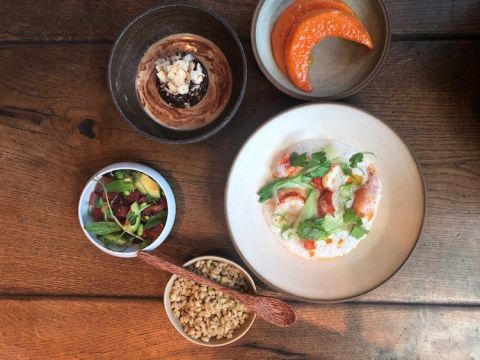Any Martian visiting Earth would currently find the restaurants on either side of the Atlantic to be very different entities.
In the US, where there are no national restrictions, restaurants are open, concentrating on deliveries and outdoor eating. The streets of New York are crowded with a combination of wooden sheds, plastic tents, yurts, booths and kotatsus (Japanese heated tables), as restaurateurs seek to keep going.
In the UK, the third national lockdown has taken away this possibility but there is still considerable activity. Many have had the opportunity to ‘pivot’, to offer meal kits for collection or delivery, with a distinct advantage lying with those that already have a food shop attached, something that is considered ‘essential’ under the current regulations. But how well are these restaurants trading, I wondered?
On the basis that there are no commercial secrets in this business I put the same five questions to three very different people I respect: Matthew Mawtus, the general manager of Hide on Piccadilly; Cass Titcombe, who left the smoke of London to open Brassica, a restaurant with a shop attached, in Beaminster, Dorset; and Neil Forbes, who, for over 20 years, has been serving top-quality French bistro food at his Cafe St Honoré in Edinburgh.
As the largest of the three, a downstairs bar and two floors of restaurants plus several private dining rooms, Hide has suffered the biggest drop in numbers: from 4,500 customers a week in December 2019 to serving 800 from a menu that stretches from breakfast to dinner and is unusually available all week. Above is their lobster meal for January. ‘But’, Mawtus added ‘we see real swings of demand.’
Underlining this, Titcombe, at his much smaller restaurant, noted that in December 2019 they had served 200 customers a week, generating £6,000 in revenue. During the first lockdown, sales of chilled meals had reached £4,000–£5,000 per week; during the second lockdown, sales had been only 30% of this, but they anticipated sales during the current lockdown at £3,500 a week.
The biggest change to any restaurant’s P&L account today comes not just from the absence of extra sales – those profitable gin and tonics and the occasional digestifs – but the extra costs involved in making the transformation from their normal style of service to their new roles.
At Hide, this has cost about £500 per month (give or take) on packaging, with an initial outlay that was close to £2,000. They have had to purchase 20 heat bags which cost £90 each and they have 10 cool boxes that cost £25 each. On top of that have come considerable transport costs. The biggest cost is car rental as they do the vast majority of deliveries themselves. On a busy Saturday, they will have 10 Zipcars hired at a cost of £80 per car per day. They also have an electric car that they hire for £200 per week, this is used seven days per week with additional cars hired according to demand. But this did make Hide’s most complicated and longest delivery possible: a seven-course tasting menu with paired wines to celebrate the 70th birthday of a regular customer in Cambridgeshire, a round trip of over 200 miles!
The same fall in sales has been experienced by Forbes but this has been supplemented by a small shop and a stall at the Edinburgh Farmers’ Market where customers can come in for a ‘glazed in front of you’ crème brûlée, a proper bridie (a pasty filled with minced steak, originally from Forfar), shortbread, delicious oatcakes or treacle tart. Below is his shin of beef stew.
Because Forbes already is a shopkeeper, his transformation costs have not been excessive but as a member of the Sustainable Restaurant Association, standards have to be maintained, he explained. ‘We have to use Vegware or BioPak, recycled and recyclable packaging, which is costing us between £2 and £2.50 per person. I believe it is the right thing to do and continues to send the message of sustainability at home.’
The switch from serving scores of customers in their restaurants to cooking, packing up and arranging delivery has brought about significant changes in the job description of the three I interviewed. As Mawtus explained, ‘Well I certainly never thought I would become a delivery driver! I have worked through each lockdown, driving in the evening and organising logistics/marketing during the day. Lockdown 1 was all about “the how” as in how do we serve as many people as possible without compromising quality.’
For Titcombe and Forbes there has been the unexpected pleasure of not having to work ‘nights’ although, as Titcombe explained, ‘A big chunk of the week is taken up labelling, packing and weighing, very different from serving hot food on plates. But it is still very pleasing to see the fridges full of food ready to go out on Thursday and empty on the Friday.’
These are sentiments which Forbes echoes but he ended, ‘It has stuck with me to always watch out for the team, to ask them how they are, to have a huddle around the coffee machine in the morning, to be thoughtful. It is such a scary time for these young people. The factor that doesn’t get much coverage is the loss of gratuities. This has a massive impact on the income of so many. Yet we must soldier on.’















